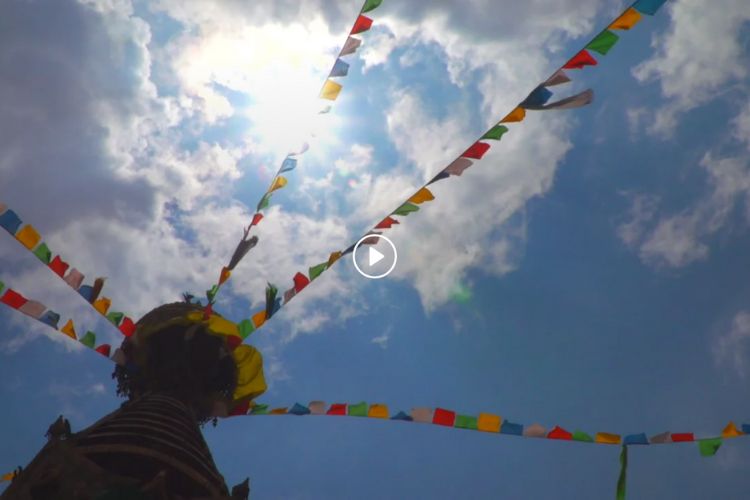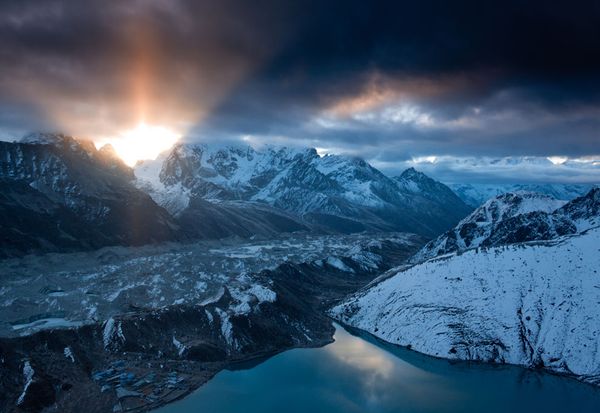
5 months after the devastating earthquake hit Nepal in April 2015 killing some 8000 people, the crippling blockade which would cause fuel, gas and medical supply shortages began. There are many conflicting opinions as to who is causing it and why, but one fact remains solid enough - the Nepali people cannot go on like this for much longer.
Being a landlocked country, Nepal relies on it's two neighbors - China and India - for pretty much everything. During the earthquake, the road (yes, the one main trading road) between Nepal and China was severely damaged and hasn't been repaired. Trade and deliveries of any kind have officially halted between the two nations, leaving Nepal totally reliant on India for all goods.
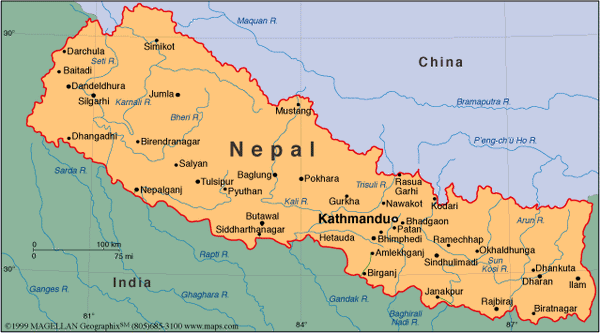
On September 20th 2015 the Nepali parliament finally agreed on it's end constitution after 8 years as a republic. The Madhesi - a strategically located ethnic community in Nepal - felt unrepresented by the constitution and 2 days after it's declaration began staging bandhas (strikes) and blocking the roads on the border. The Madhesi reside on the 'Terai' - the huge parcel of low lying land at the foothills of the Himalayas, and are ethnically, linguistically and culturally aligned with India, in particular their neighboring states of Bihar and Uttar Pradesh.
While the Madhesi are indisputably the first causal layer of the blockade, Al Jazeera is dubbing it the unofficial Indian blockade. An Indian newspaper published an article accusing it's own government of demanding changes to the Nepali constitution on the day the blockade began. This is also the general consensus in Nepal, leading to the hashtag #backoffindia to be circulated in Nepali media circles soon after.
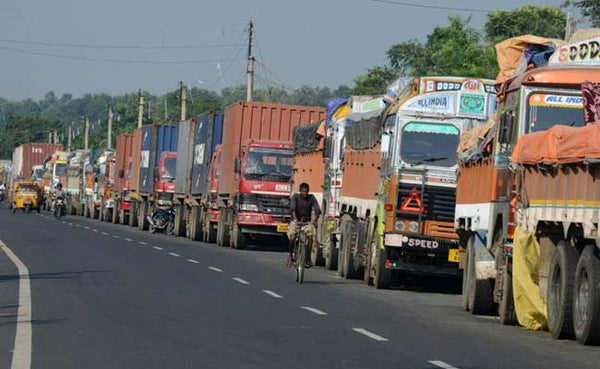
Trucks stopped at the border (image via The Argus Chronicle)
India denies any involvement in the blockade. As well it should, as it would be breaking long standing international treaty conditions if it had.
Regardless of 'who started it', here's how it's affecting Nepal and her people:
- Before the border blockade between India and Nepal began, it was common for over 300 trucks to cross the border each day bringing vehicle and airplane fuel. Now it's been reduced to a slow dribble of 5 - 10 per day. Fuel (when you can get it) has risen in price astronomically and with a 4 day line-up for just a small ration it places it well out of reach of the ordinary Nepali citizen, and leaves no sector of the society untouched.

Waiting in line for fuel (image via Yahoo News)
- Gas for cooking has long run out. People are cooking over wood fires, and aside from the time constraints and poverty conditions this implies, it's placing an incredible strain on the forests of Nepal.
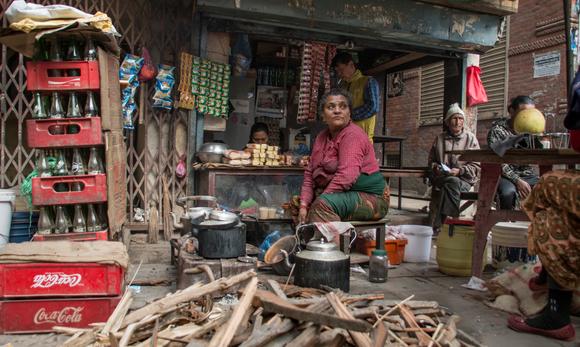
Cooking over wood fire (image via Asian Review)
- Medical supplies are running on empty with over 50% of all medicines in Nepal imported. Hospitals and ambulances have basically been shut down due to lack of fuel for either generators to run equipment and refrigerators, or for vehicles.
- Schools are on 'holidays'. Due to the lack of diesel to run buses, many schools have been forced to temporarily close their doors. The lack of fuel, paper and ink have also affected the printing of 15 million textbooks across the country.

Children protest in response to schools closing (image via BBC News)
- Tourists have stopped coming again. For a country that has regularly relied on foreigners coming to climb and trek it's mountains since the 1950's, this is a major problem. The Australian government has placed the entire Terai region of Nepal on the highest possible alert and the rest of the country on the second highest alert. Things are not looking good.
But perhaps the biggest tragedy affecting the Nepali people is that the earthquake rebuild is not happening. Lack of building materials and fuel to deliver it are ensuring that "what could have been transient poverty is turning out to be structural poverty due to delay in reconstruction works" according to the United Nations. The blockade and subsequent shortages occurring so quickly after the earthquake "threatens the future of the country itself" UNICEF has stated. A month ago Oxfam warned that it's 'humanitarian program will come to a complete standstill within weeks'.
The people of Nepal deserve much better than this. The economic cost of the blockade has now far exceeded the economic cost of the earthquake. Why is the international media not reporting on this? Is this simply an internal stalemate where the 'players' are affecting millions of lives based simply on ego? Somebody, somewhere needs to start making choices based on the people under their leadership ... or the people of another nation reliant on them. This needs to end now or we risk losing this tiny country with the biggest heart.
Until next time,
Mel Xx

Main image credit: via Pinterest
Read further:
Lose-Lose - Kunda Dixit for Nepali Times
Nepal Blockade - A Looming humanitarian Crisis - Adara Development
Analysis: Blockade Politics in Nepal - Thomas Bell for Al Jezeera
Bordering on Helplessness - Xiaotong Xu and Siran Liang
2015 Nepal Blockade - Wikipedia
Fuel, Medicine Shortage Paralyses Valley Hospitals - Himalayan News Service for The Himalayan Times
Nepal Blockade: 6 Ways it Affects the Country - Mahesh Acharya, Surendra Phuyal and Sanjaya Dhakal for BBC Nepali
Smart Traveller - Australian Government
Nepal Border Blockade 'threatens the future of the country itself' says UN - Pete Pattisson for The Guardian











